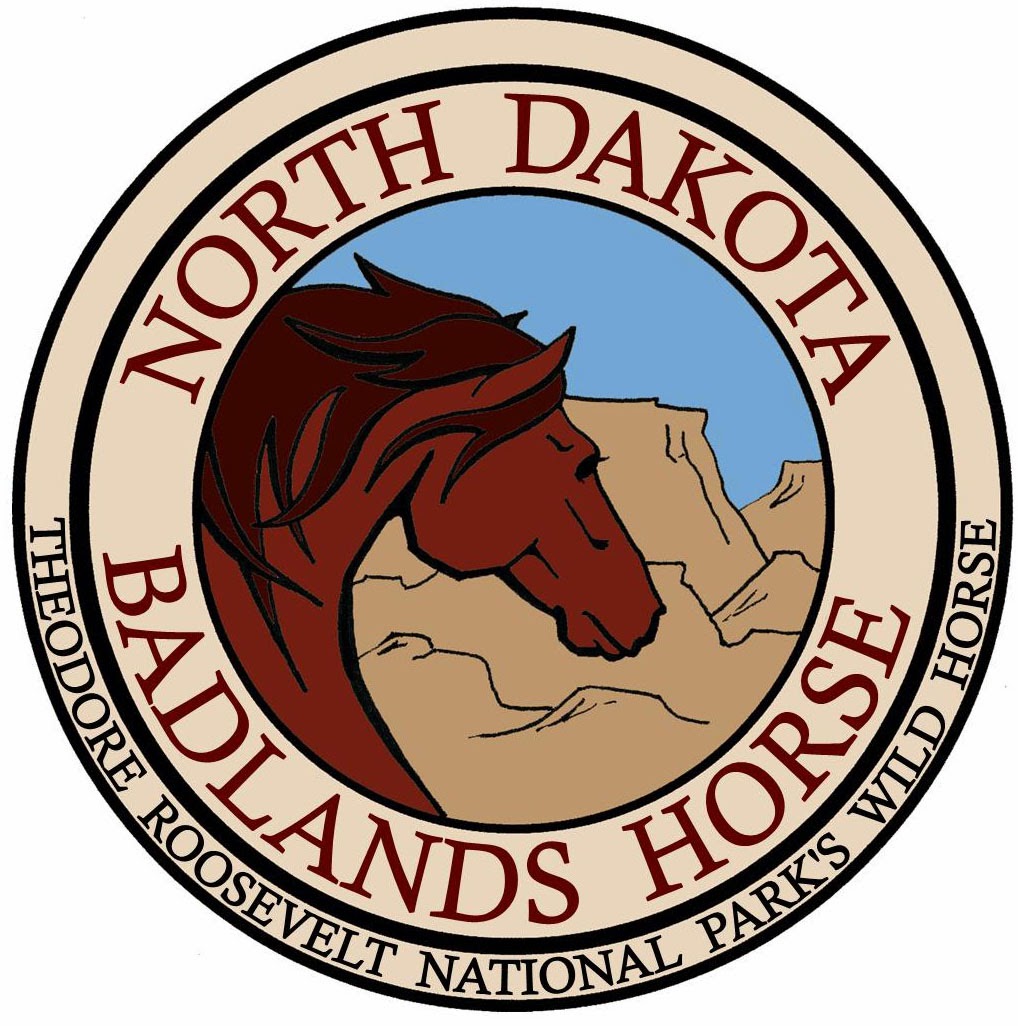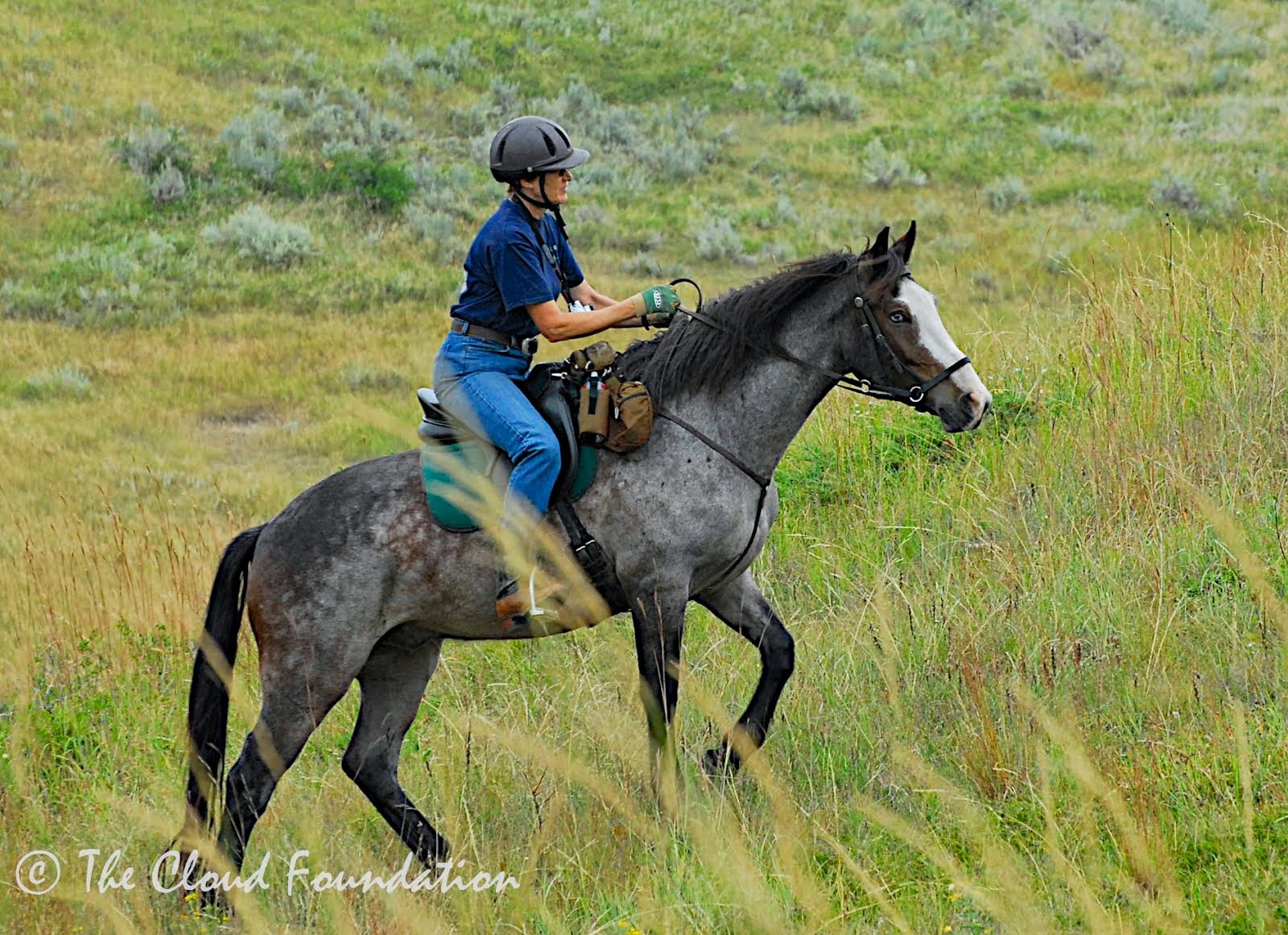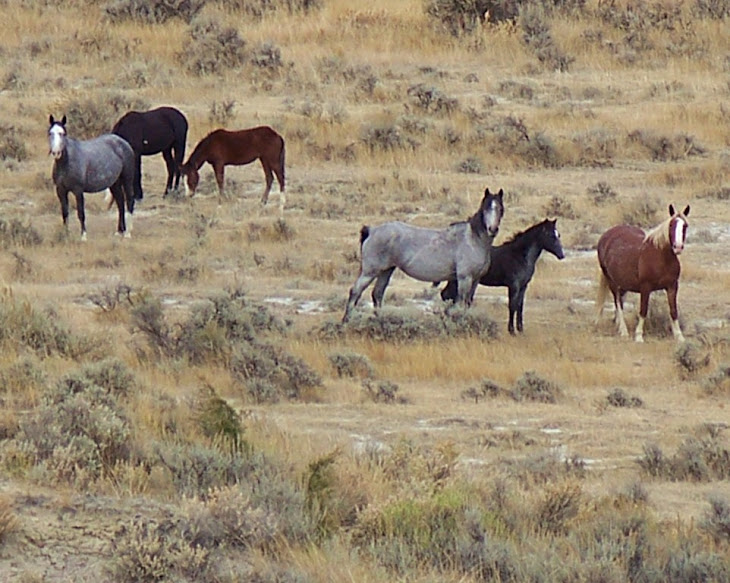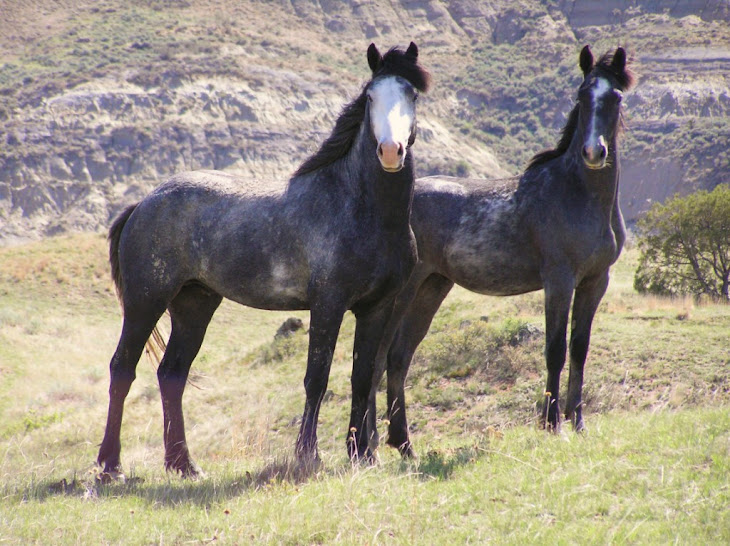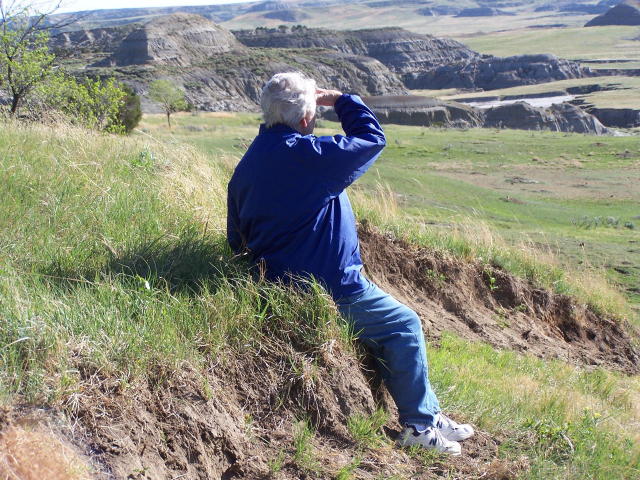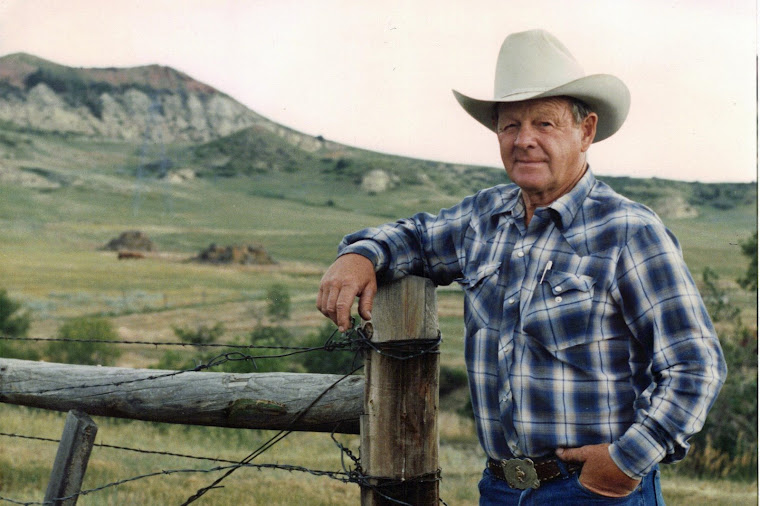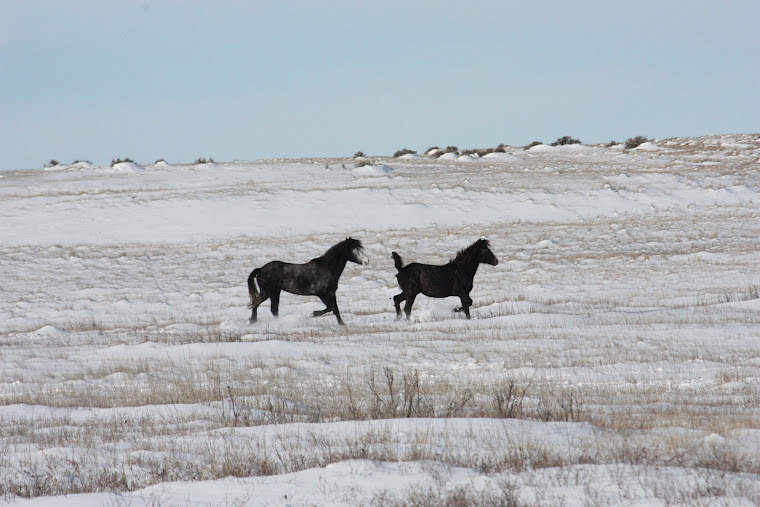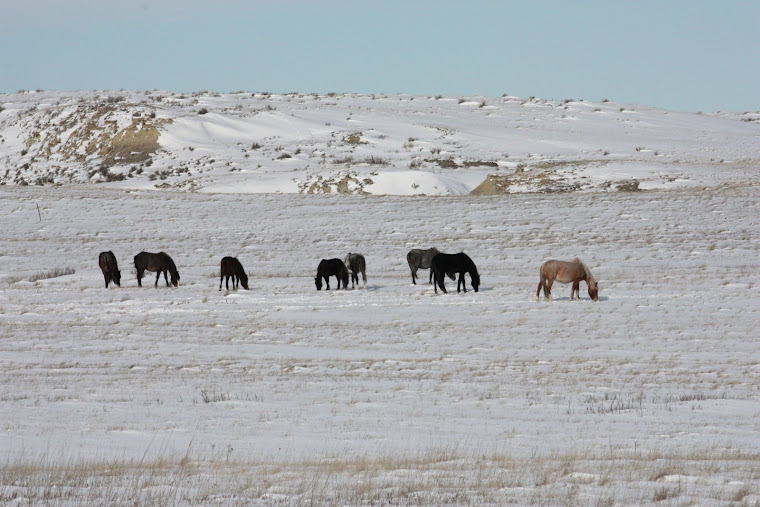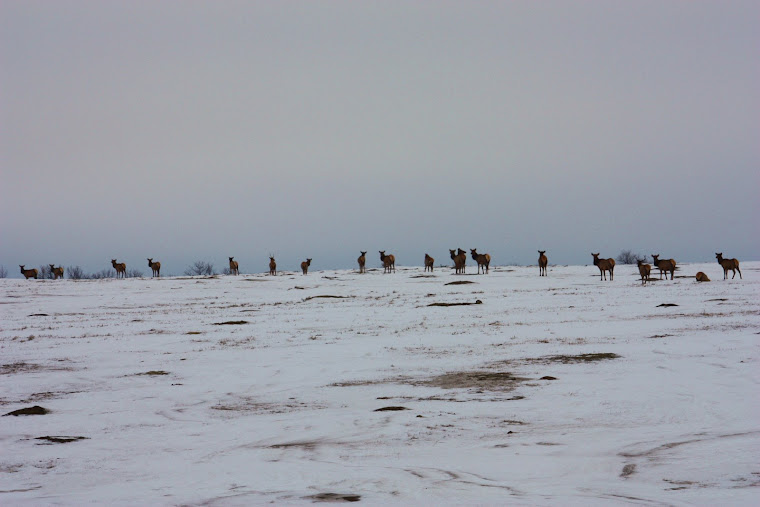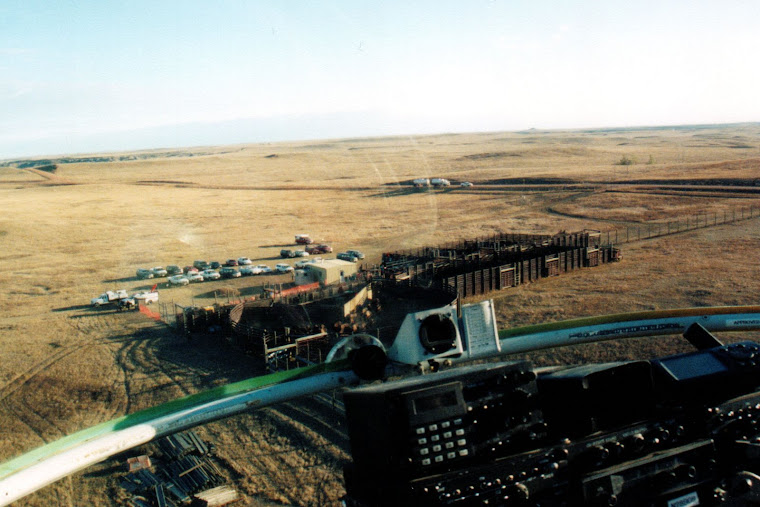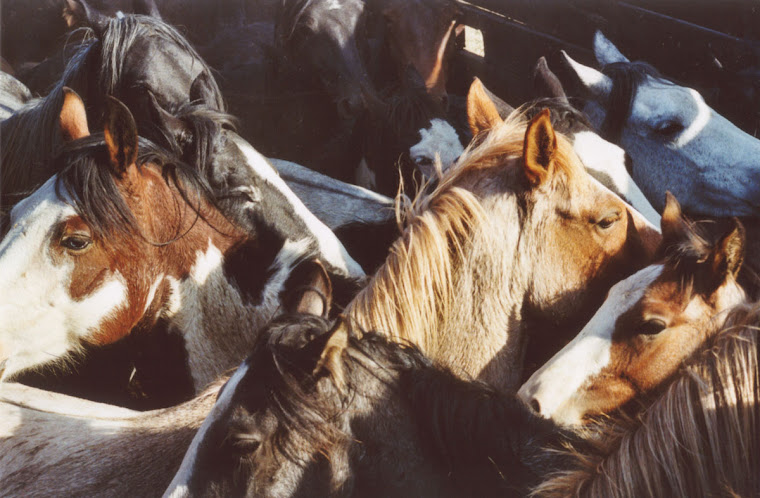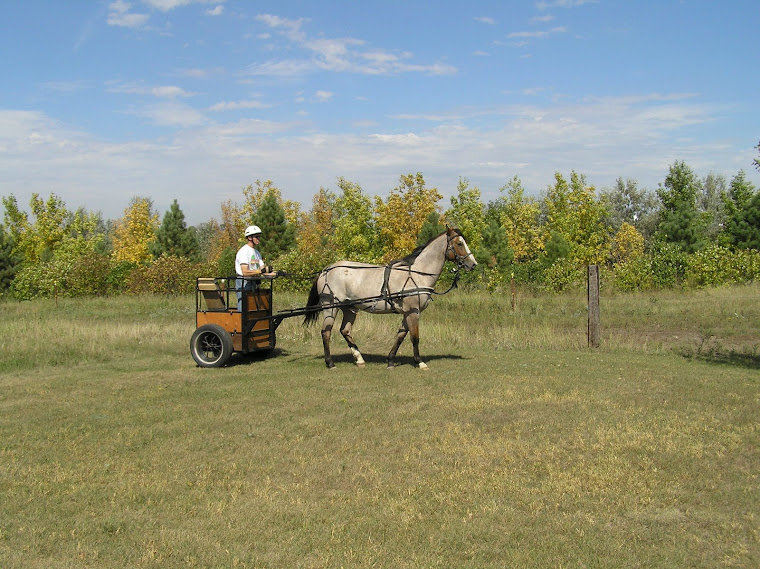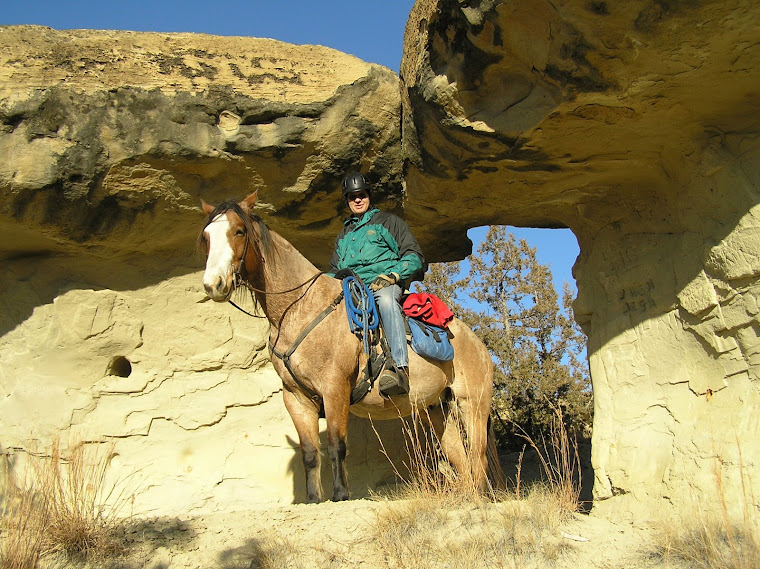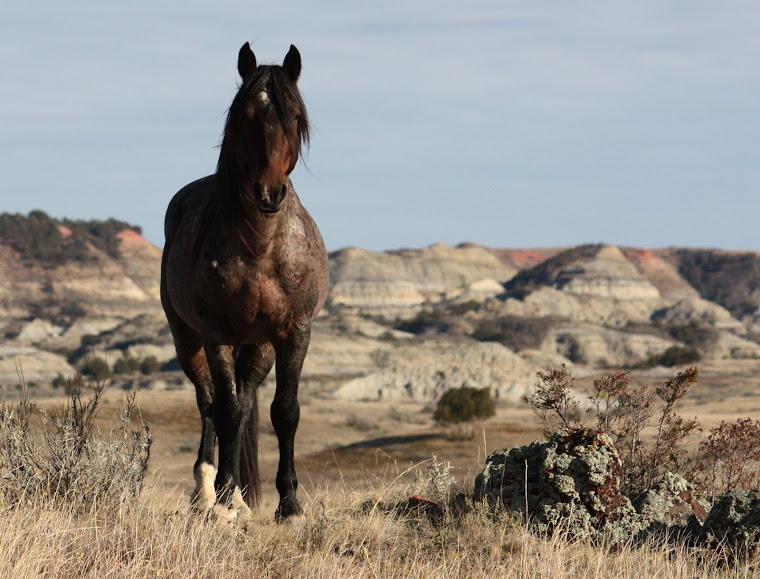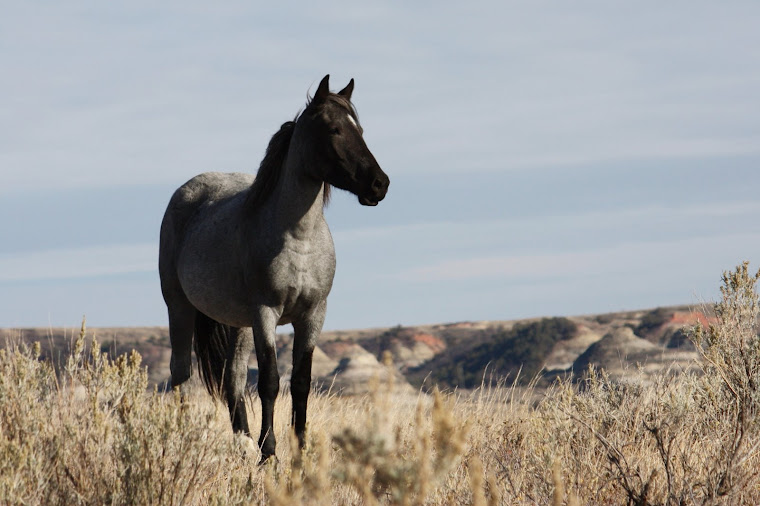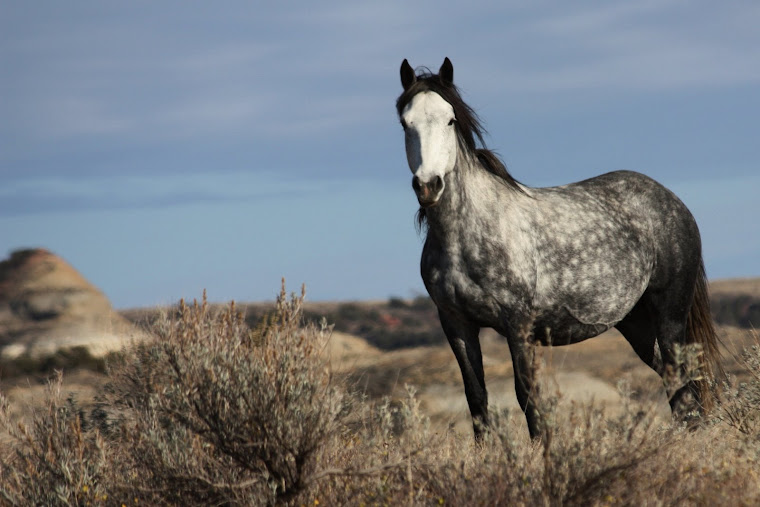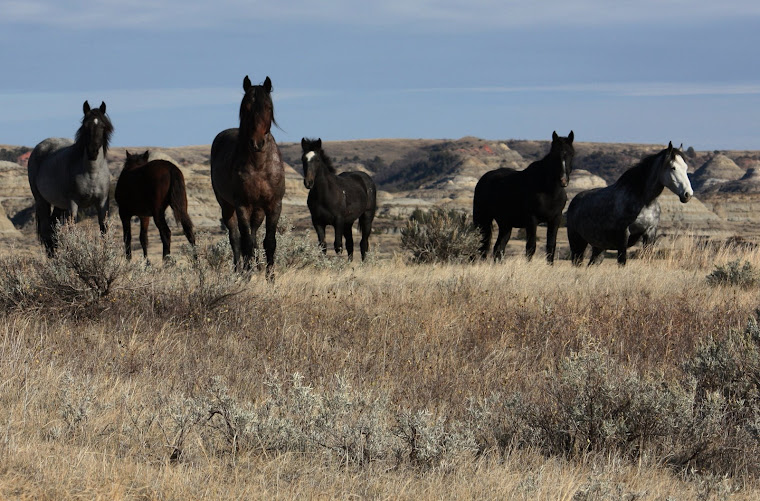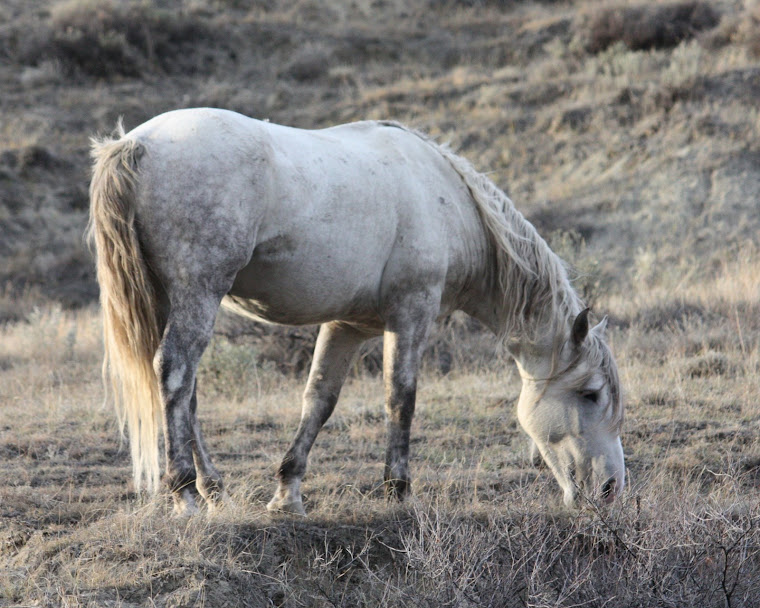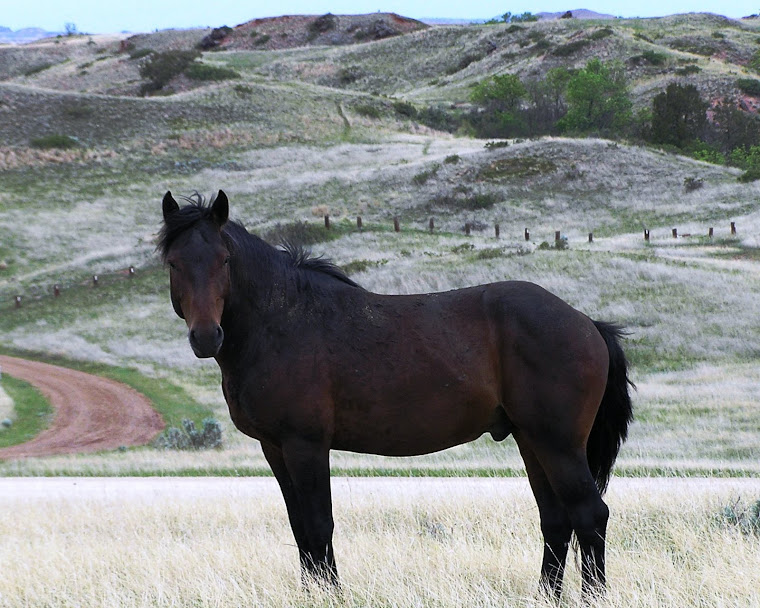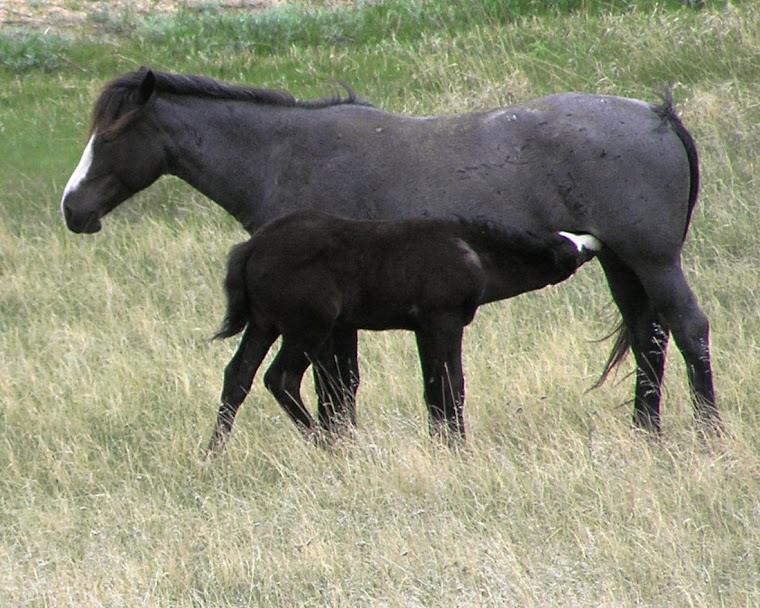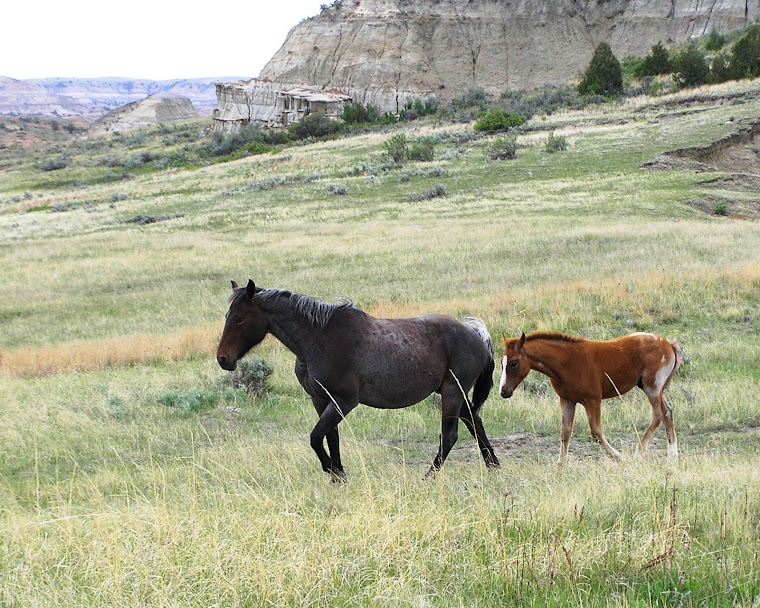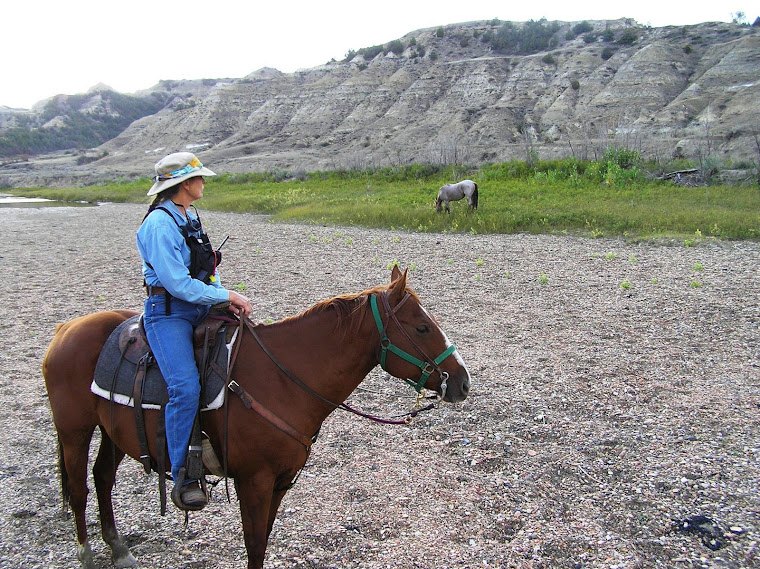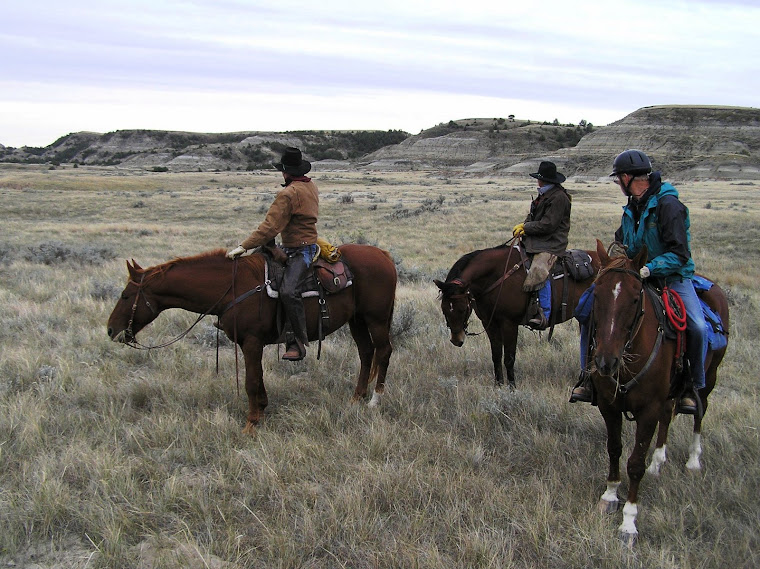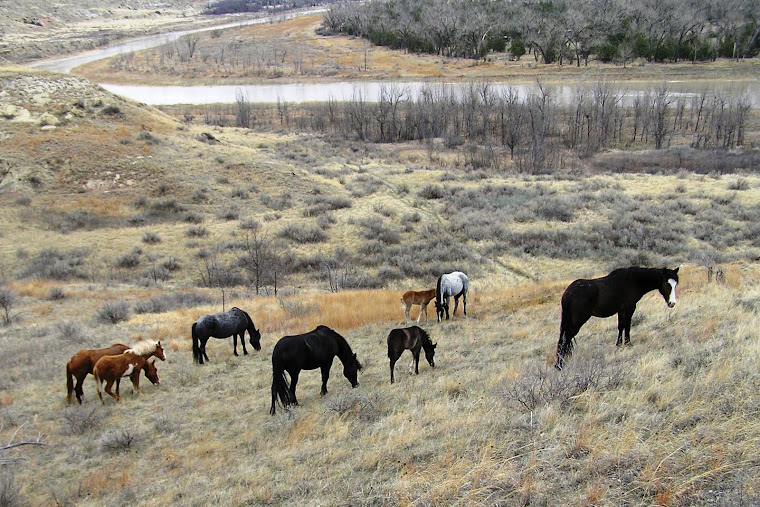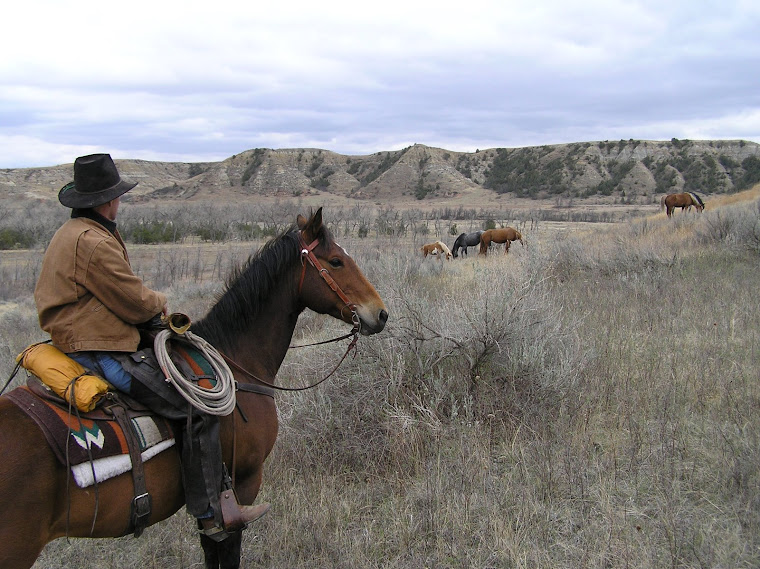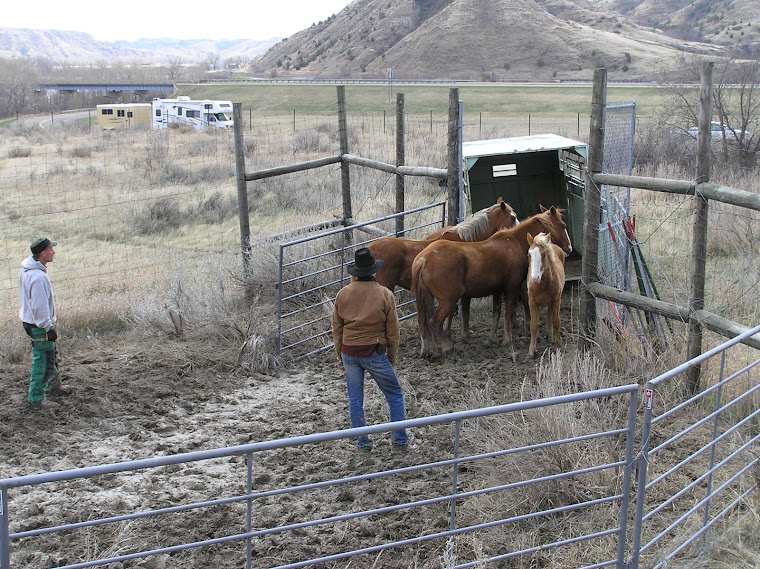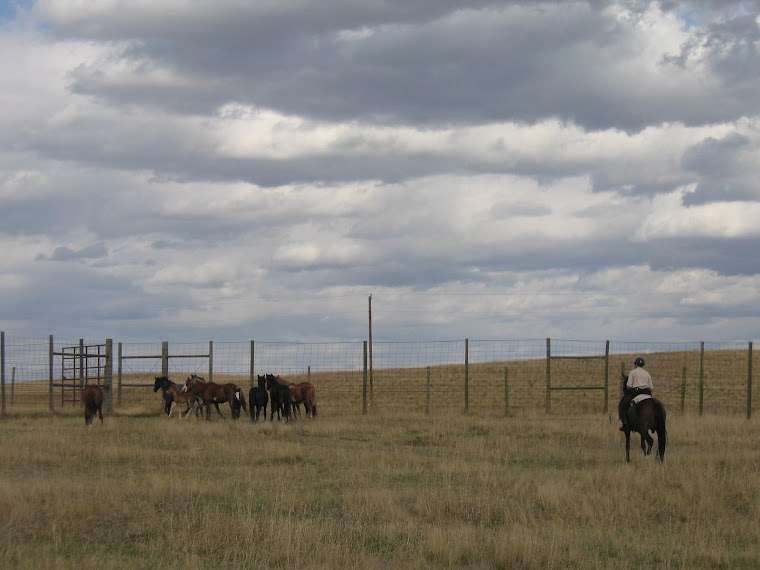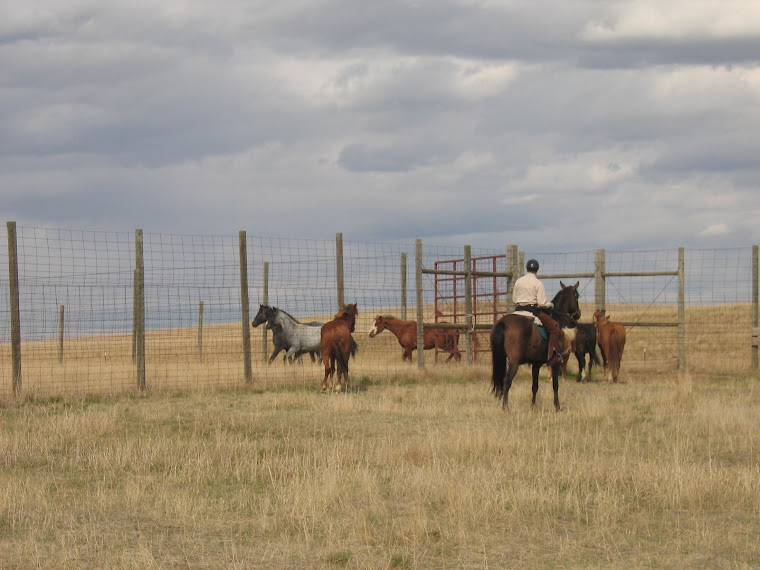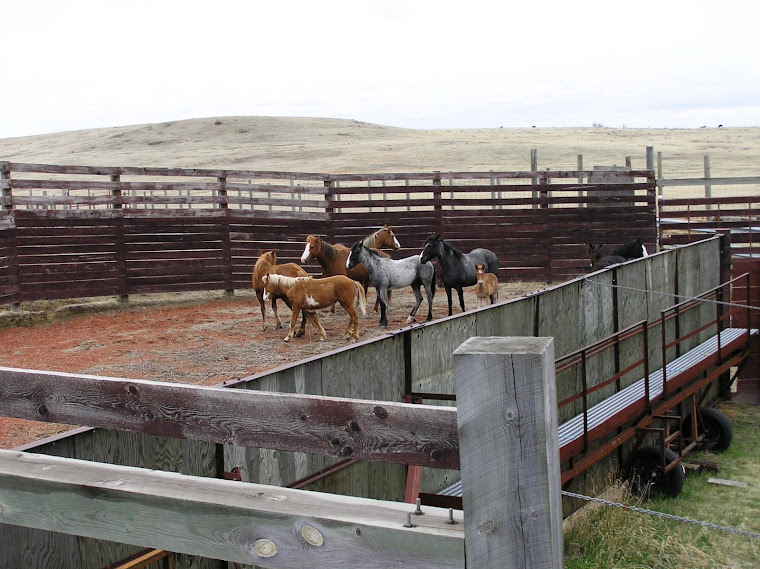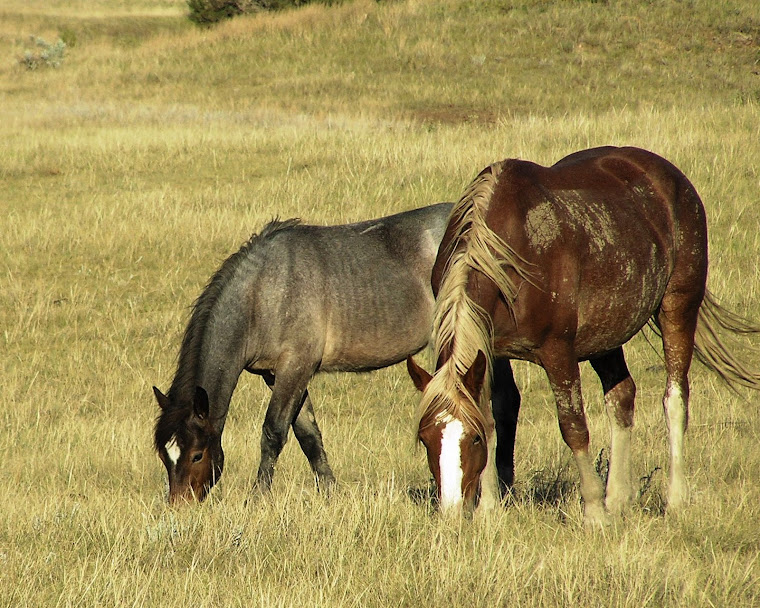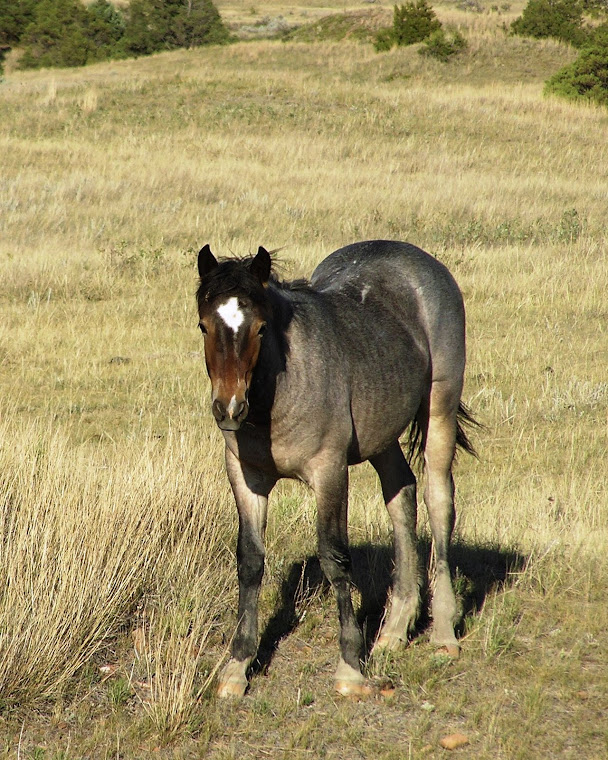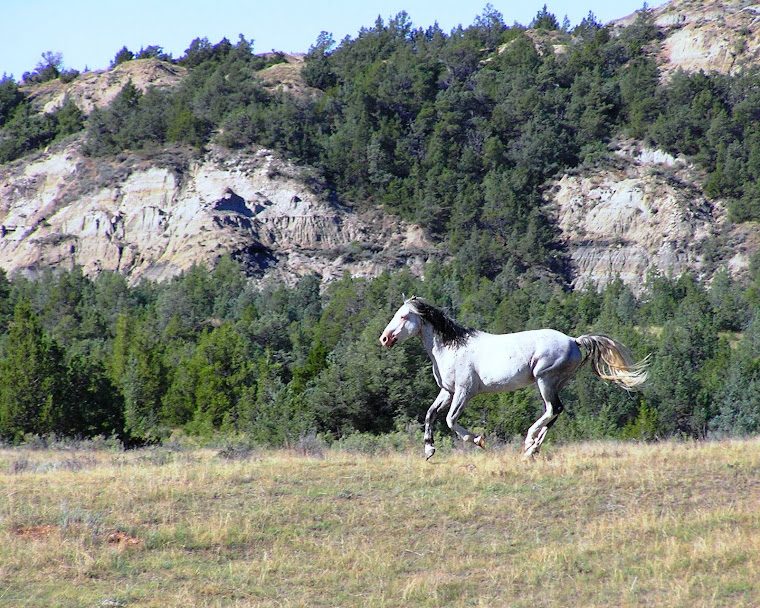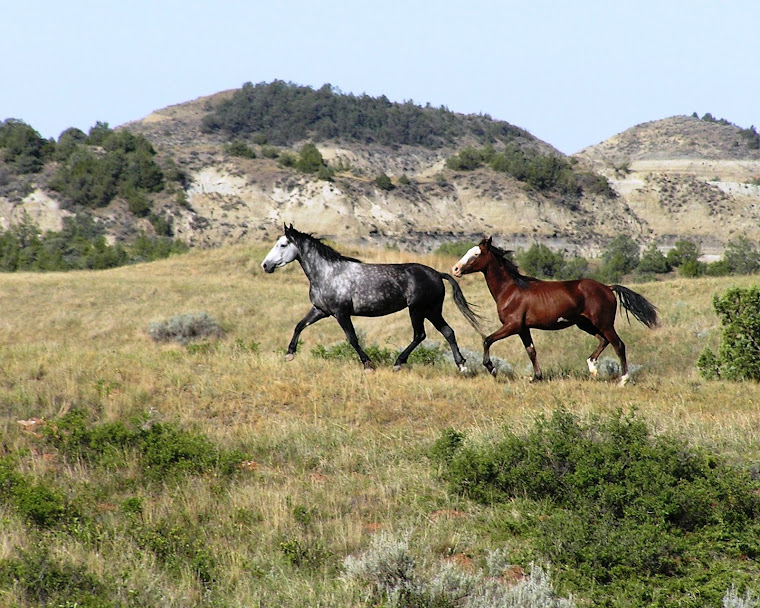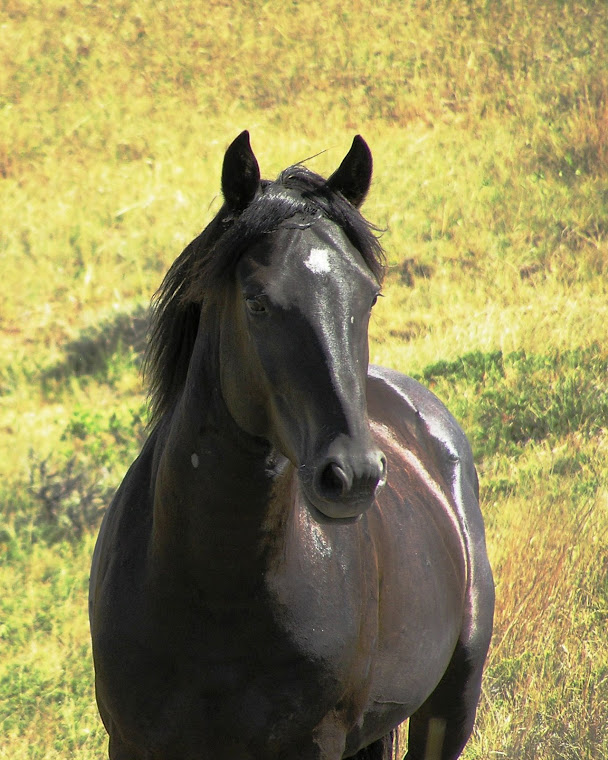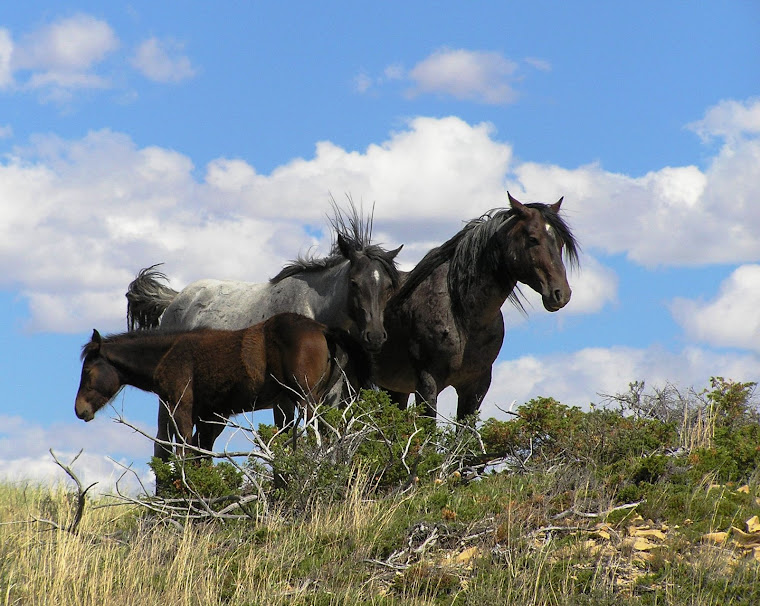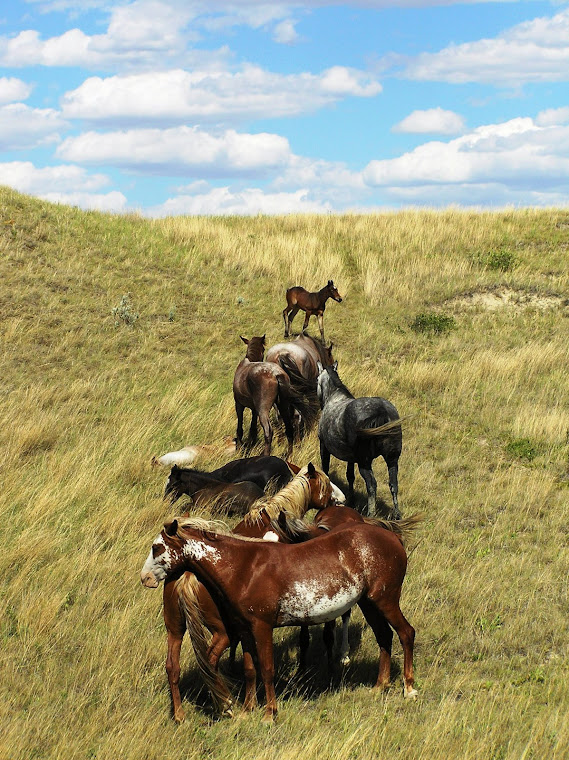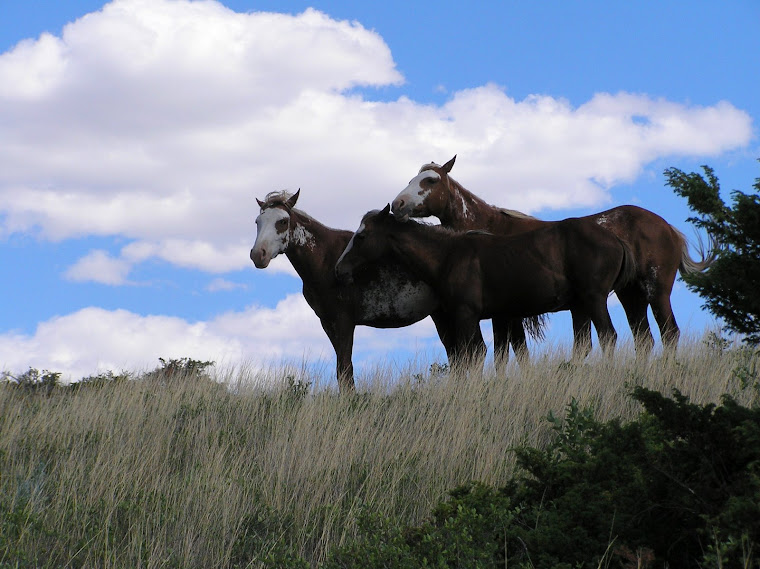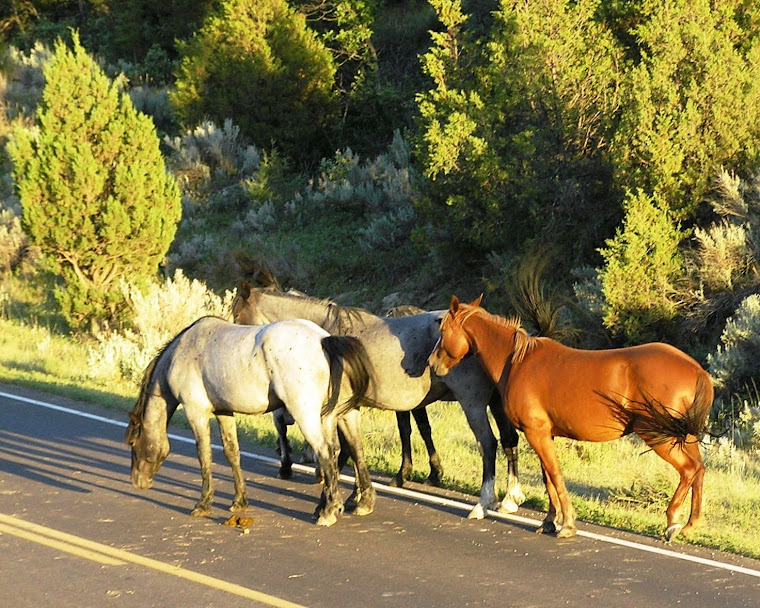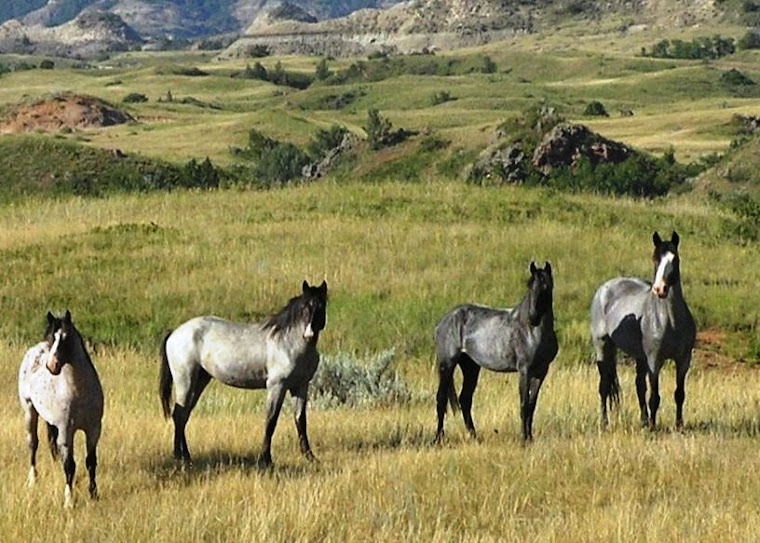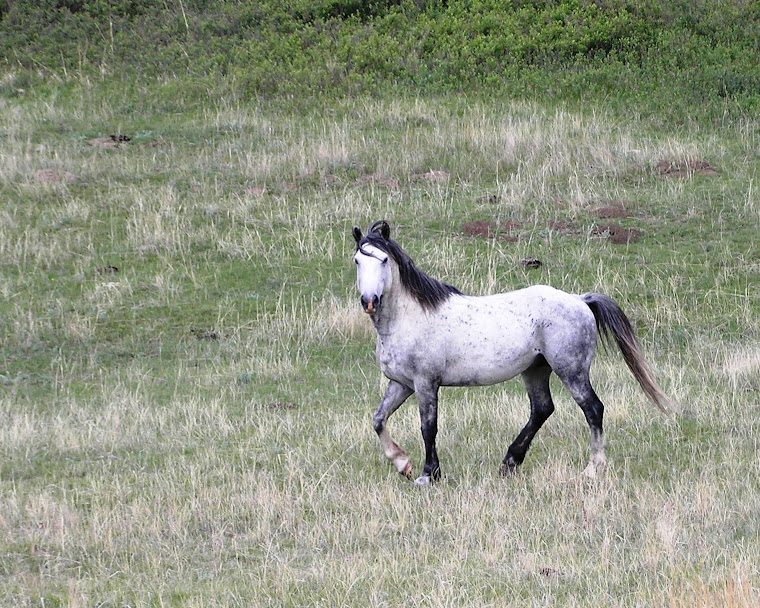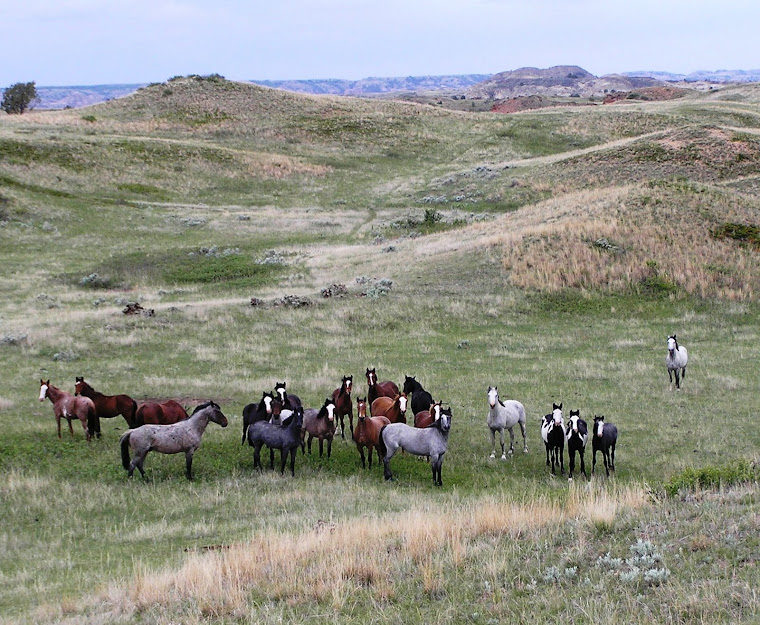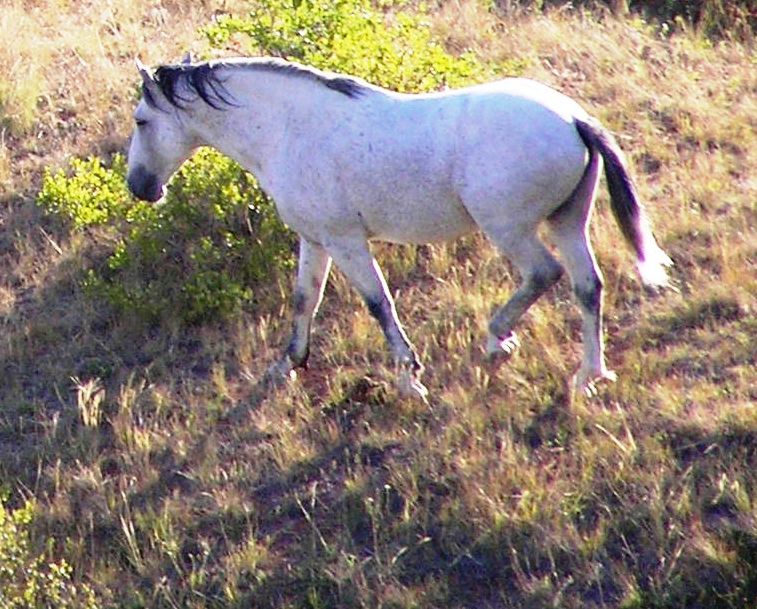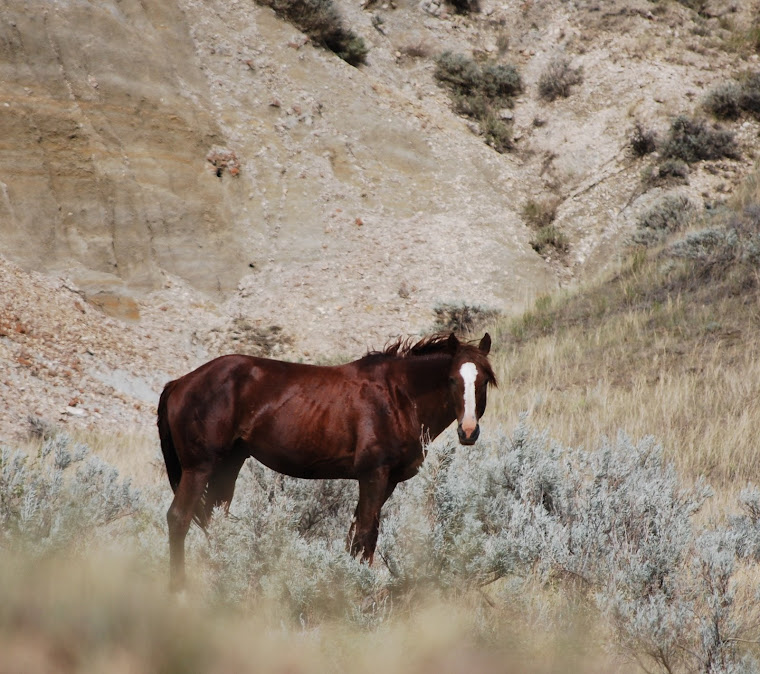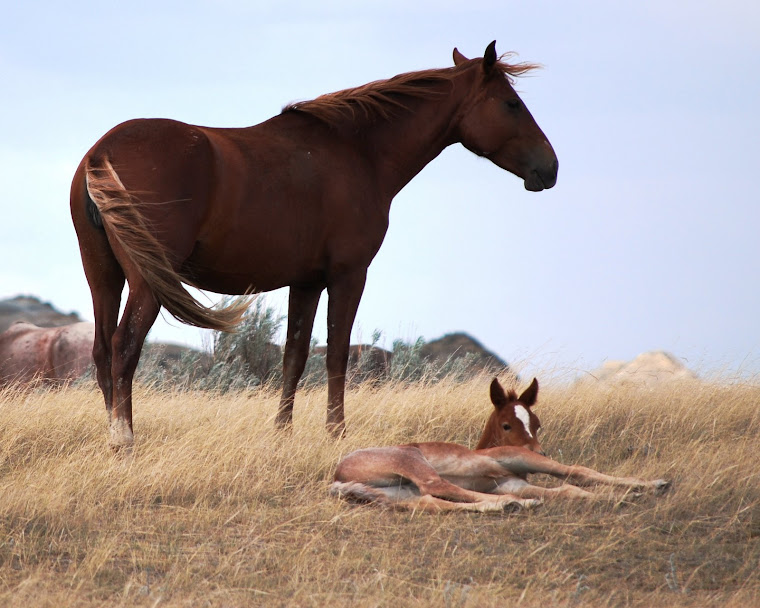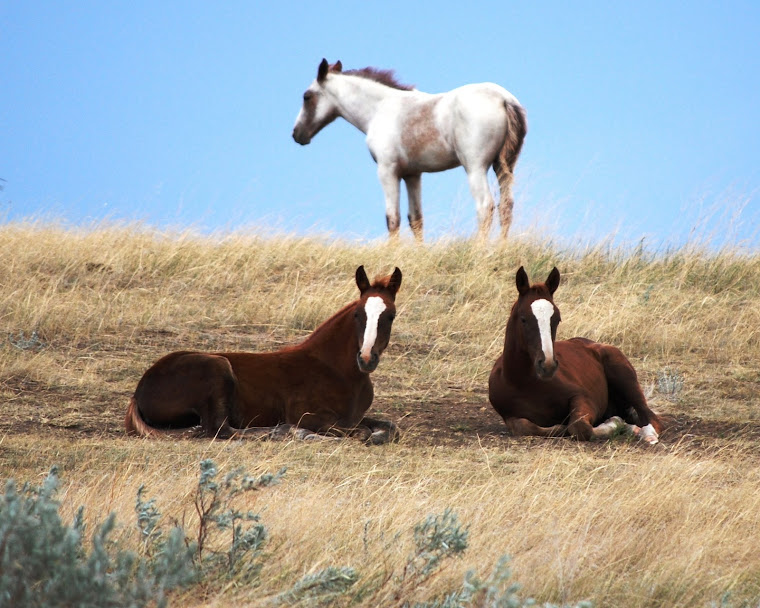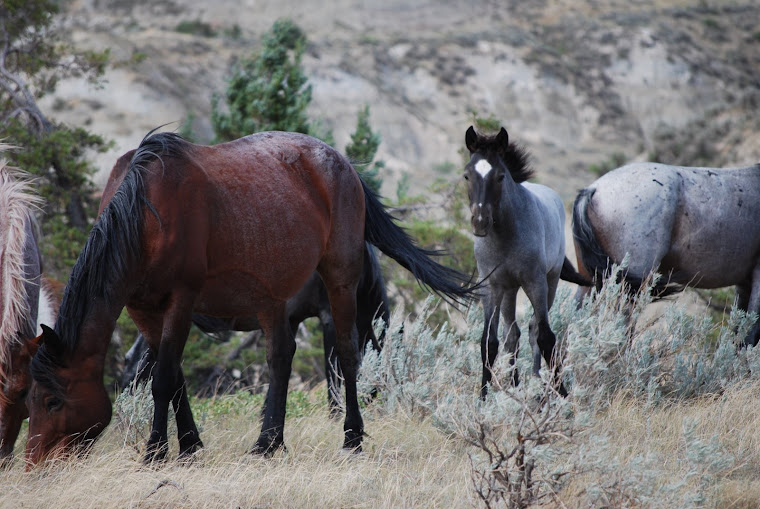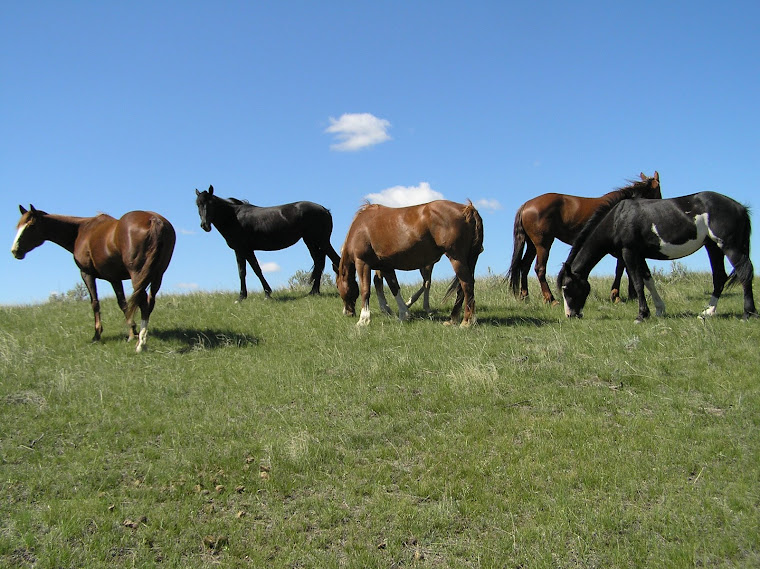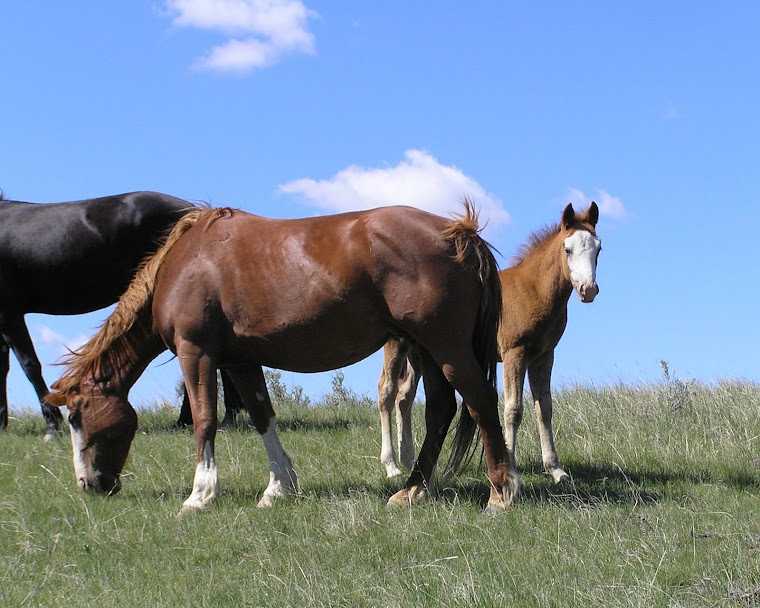A WEEK IN THE LIFE OF A FIELD TECHNICIAN
FOR THE WILD HORSE RESEARCH PROJECT
By Marylu Weber
Winter had
been typical in western North Dakota, with below zero temperatures and strong
NW winds sculpting the snow into mammoth drifts, but spring was coming, though
residents often wonder if warm weather is just a fond memory or something their
“snowbird” friends brag about.
Out in
Theodore Roosevelt National Park, there had already been one foal born. Mist had again been the first to foal, but
little Autry didn't survive that pelting snow and cold. Every year our boss with the research project
wants to get technicians in the field in March to document those early foals,
evaluate mares, and watch for any behaviors that could be affected by the
contraceptive vaccine. This year was no
exception, but fate determined that April would again be the start of the 2014
research season.
Our former
Lead Coordination, Maggie, our new Lead Coordinator, Tiana, another field
technician, and I were scheduled to all get to Medora April 1, so that Maggie
and I could train the new people. Watching the weather forecast, I talked to
our boss and decided to go early, before a blizzard hit the Black Hills. The Medora area was predicted to get rain
changing to snow, but no large accumulations.
I left at 6:30 and was in the park by 11:00 am where I met up with Amber
and Elizabeth, some FB friends and enthusiasts of the horses, to find horses
and see if there were any new foals.
Before the rain started, we were able to find Granite’s small band and
the Double band of Red Face and Singlefoot.
Amber and Elizabeth had seen a new foal with them the night before so we
wanted to check it out. There was Pretty
Girl with a cute light sorrel filly; we named her Cash, because the theme for
2014 is country music artists. Just as
it started to rain, we met up with Lyle and showed him the shortest way to get
to the band so he could get some shots of the new filly.
Overnight and
into the next day the rain and light snow flurries became 8 inches of crystalline
beauty. By the next morning the sun came
out bright and warm, but the temperatures were still just above zero. Since the snow was soft and had not blown
around much, with a “be careful” from a couple of the guys from the park, I set
out around the 36 mile “loop” through the park in search of horses. What a magical experience it is to see the
Badlands covered in a pristine blanket of white! That day I found the bands of Clinker, Gray
Ghost, Silver, Satellite and the Double band.
When Amber, Elizabeth, and I had seen Firefly in Silver’s band, we had
thought she looked close to foaling so it was no surprise to see a brand new
baby with Firefly. It was a cute dark
filly; her name is Dixie. It was a
fabulous day to be born and to just enjoy life.
The next day
Tiana and I worked in the office while we waited for Maggie because another
prediction of light flurries brought about 5 more inches of snow. Once Maggie arrived we drove just to the
north side of the park and prayed that we would be able to traverse the loop
the next day. Morning again brought
bright sunshine but a biting NW wind.
Going around the outside of the park we found Thunder’s band on the east
side and Blaze in the bottoms to the NE.
The snow was up to our knees in places, making hiking possible but very
tiring. Neither of those two bands had
new foals nor did Gary’s band on the south, but we started with the behavior
study, documenting what each horse was doing every minute, on the minute for 20
minutes, and also making note of any aggressive or reproductive behaviors. Mares were evaluated for condition, pregnancy
status, and any possible reactions at the site of injection of the
vaccine.
Days six and
seven brought warmer temperatures, melting snow, running water, and lots of
mud. We had taken the large scope in
order to identify horses at a long distance and I had finally braved bulldozing
through the drifts to get to the top of Buck Hill. From there we could see Cocoa, Thunder, and
Sidekick. There didn't appear to be any
new foals with Cocoa or Thunder, but there was a little black foal with
Sidekick that could be the one born in February or a new baby. They were so far away that we decided against
going out to find them; a friend had offered to help out on his day off so he
could go the next day. I dropped Maggie
and Tiana off on Talkington so they could go after Cocoa. What would normally be a 3 hour hike, including
the study, would become a 5 hour excursion through mud and running water. I had decided to keep glassing from Buck
Hill and no sooner got back to the top when I spied the Double band on lower
Talkington behind a small herd of bison.
What intrigued me was the sight of another new foal, this one out of
Flame. I knew the others would be gone
for some time so I texted them that I was going after the Double band again for
the new foal.
It took only
about 15 minutes to skirt the bison and get to the Double band, grazing and
resting just across Talkington Creek. It
was an uneventful 20 minute study except for a couple threats from Red Face to Singlefoot. Having completed the behavior study, I needed
to get closer to do mare evaluations and get a sex on the foal. The problem was that the creek had now risen
to be about 4-6 feet wide and an unknown depth.
Searching up and down the creek looking for a narrower place, I
considered what the best plan of action was- jump for the other side, find a
tree overhanging the creek, or maybe finding an area with rocks to step
on? None of these options looked good. Out of frustration, I finally found a wide
spot that didn’t seem to have any disturbances on the bottom. Reaching out with my walking stick, I tested
the depth and found the bottom to be about a foot down. Tying my waterproof pants over the tops of my
water-resistant boots, I figured I couldn’t get too wet if I sprinted across to
the other side. After all, there was an
animal trail there and I HAD to get a closer look at that foal. I made sure my backpack with my camera,
paperwork, timer, glasses, etc. was secure on my back and my phone was zipped
into a deep pocket in my jacket, took a deep breath, and made a run for
it. Two steps in, I dropped into the
gully running in the bottom of the streambed and stumbled to my knees. Muddy snow runoff was now covering all but my
shoulders and head. Gasping from the
cold, I scrambled across the rest of the way and stood up. Backpack-dry!
Paperwork-dry! Phone-just a tiny
bit wet on one end! Field
Technician-soaked to the skin from shoulders to waist with water running down
inside my waterproof pants and boots. I
started to laugh hysterically. Well, I
had saved the important things and now I was on the right side of the creek to
get closer to baby and continue my study.
Baby was
another filly who looked just like her sister Cash; since “E” was the next
letter, I called her Emmylou. After I
got some shots of the foals, the horses paraded themselves past me so that I
could get good photos of their right hips in order to record any injection site
reactions. I bid them adieu and headed
off the try to find a way back across the creek. Hiking both directions found me nothing to
make my crossing any easier until I came to a dead tree bent over to create a
perfect arch about 4 feet high and 6 feet wide.
It was located in the center of the streaming water but I could get to
it from my side without getting too wet and hoped I could jump to the other
side. Crawling onto the arch and to the
other end I again reached into the water with my stick to test the depth. It was DEEP.
My stick went down to about 3-3.5 feet.
This was not going to be a good option.
Back across the arch bridge, back through the ankle deep water and what
could I do, but start hiking up Talkington Trail to where in intersects the
loop road. There was gully after slimy
gully where I had to slide down one side and clamor up the other through trees
and brush in order to have any traction, but finally, after more than an hour,
I made it to the road and back to the truck where I stripped off everything I
could and sat alone, laughing with the heater running and the windows open,
until Maggie and Tiana were ready to be picked up. Though I was by then soaking wet from my
shoulders to the souls of my feet, I was never cold. It had been another ”Excellent Adventure!”
Maggie had
to go home the next day. I stayed to
help Tiana one more day before we set her off to face the challenge alone. We knew she would do well because she is dedicated,
smart, and strong. Lyle would try to
feed her as much information as he could about the location of bands and
arrival of new foals. There will be a
new technician starting in May, so Tiana will have full time help and I will go
back to help once a month. As soon as I
was on the road, heading back home, I was anxious to see my husband, horses,
dogs and cats and the glorious Hills of home, but I was torn because I wanted
to go back to the Badlands. They and the
wild ones who live there will always have a special place in my heart.
